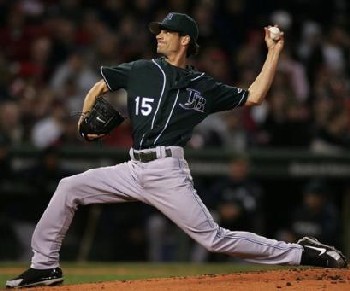quote:Originally posted by Texan:
Not sure exactly where you were going with the horizontal comment.
It was nothing more than just to let anyone know that trying to throw it slower wasn't (necessarily) the best way to go about it.
quote:Originally posted by Texan:
Not sure exactly where you were going with the horizontal comment.
quote:Originally posted by 06catcherdad:
I also have issues with you advocating in any manner, the screwball. Have you noticed that almost nobody at all, at any level, throws a screwball? There's a reason. Arms can't take that unnatural motion, even more so than what splitters do to arms.
quote:Originally posted by 06catcherdad:
Get real, lots of people who've had the surgery will tell you that they began having problems after throwing a splitter, but not until then.
quote:Originally posted by 08Dad:
On the subject of throwing the screwball (quoting from Neyer/James pg 54-55)
"Carl Hubbell threw so many screwballs he was left permanently disfigured... his left arm... loks as if he put it on in the dark."
Lew Fonseca "the screwball is another trick pitch that can ruin a beginner's arm"
Jack Coombs writes... "The screwball ... should never be taught to a young man... as it calls for muscle movements in the wrist, forearm and elbow that are contrary to the laws of nature"
Pat Jordan... "only a demented person would specialize in such a perverse pitch that is so hard to master and so damaging to a pitcher's arm"
quote:I feel that we spend too much time worrying about stuff that we really don't know anything about. Pitchers hurt their arms all the time,
quote:Originally posted by bbscout:
..the main problem is in the lousy newer deliveries being taught in the past 20 years, not in the type of pitches they throw.
quote:Originally posted by 06catcherdad:
painguy, are you just arguing for the sake of argument, or do you really not get it?
quote:Originally posted by BobbleheadDoll:
Most guys say going over the head is wasted motion. My son prefers breaking low to keep his weight over the rubber. So he dosen't lean too far back.
quote:Originally posted by bbscout:
The no wind up where the hands are tucked into the chest and then have to go from a dead start. Even most of the kids who go over their head, then take their hands down to their chest and stop.....and then have to start again. Terrible.
The old way way was the hands going over the head and the arm would have a free running start. It would go over the head and from that moment on, it was moving without any stops in between. Much less strain on the arm and it lets the arm build up speed with less effort.
quote:Originally posted by Texan:
Looks like a momentary pause to me is all I can say. But that is neither here nor there.
I guess you aren't going to explain your reasoning. I would have been interested in hearing it...
quote:Also, you may not believe there is any body of evidence that a lot of guys who throw the split causes problems, but there is. It is called a large number of current and former pitchers who throw/threw the split and now have a 6 inch scar on the inside surface of their elbow. Get real, lots of people who've had the surgery will tell you that they began having problems after throwing a splitter, but not until then
quote:Originally posted by Midlo Dad:
But I wouldn't hold this up as a model to emulate.
This pitcher drifts forward in his leg kick. The result is that his lower body weight is out front before his upper body is ready. In the end, he's throwing mostly arm, very little lower body enhancement. He could improve velocity by keeping his kick side back a bit longer, so that his upper body could shoot the ball out ahead of it with the weight coming behind from the hip turn.

quote:This pitcher drifts forward in his leg kick. The result is that his lower body weight is out front before his upper body is ready. In the end, he's throwing mostly arm, very little lower body enhancement. He could improve velocity by keeping his kick side back a bit longer, so that his upper body could shoot the ball out ahead of it with the weight coming behind from the hip turn.
quote:Originally posted by Midlo Dad:
By comparison, Maddux's release very much trails the body action. He does not get the leverage behind his fastball that the other three do...One thing you get when the arm trails is a lot more tailing and sinking action.
quote:Originally posted by thepainguy:
In terms of the forward drift, this is what most high level pitchers do (e.g. Clemens, Schilling, etc). They get their bodies moving forward toward the plate at or just after the apex of their leg lift. They do not come to what is often called the balance point.
quote:Originally posted by Midlo Dad:
I don't know what you mean by "large degrees of external rotation". That's not a term I use, and besides, it's not what I was talking about.
Maddux hit 90-91 as a young MLB pitcher. I very much doubt he was throwing 90 in the clip. That motion won't produce 90.
quote:Originally posted by Emanski's Heroes:
I just hope Mr. Maddux has donated some money to his old high school to fix that mound. At least it's just the bullpen.